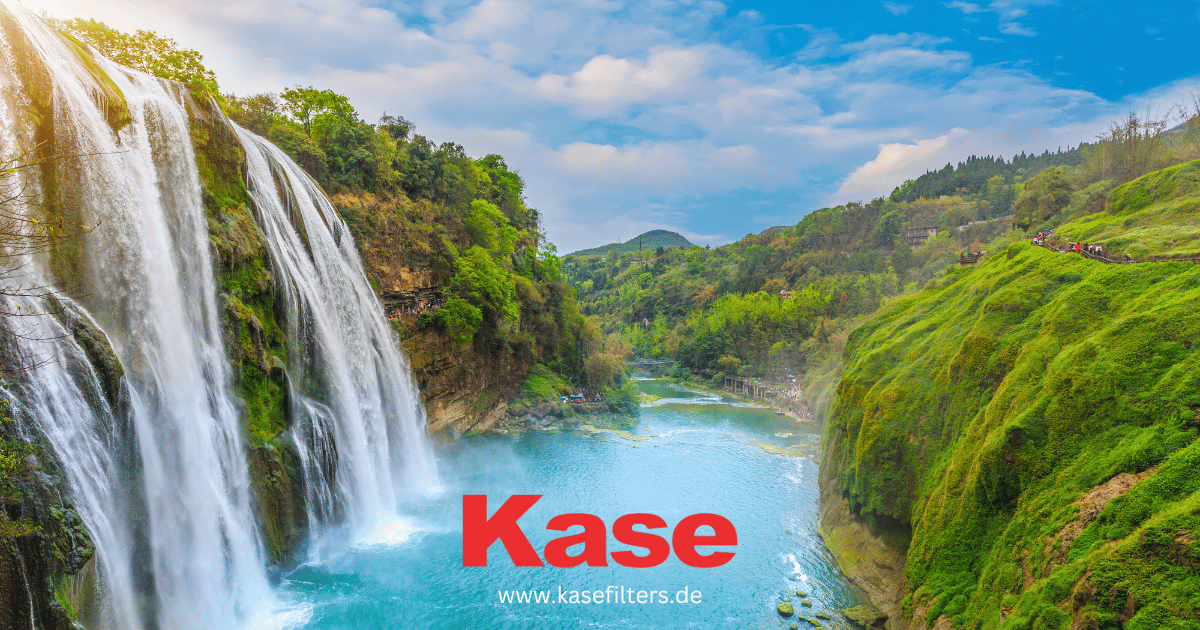General

Unleashing the Power of Waterfall Photography: Essential Tips and Gear
Waterfall photography is a captivating genre that combines the beauty of nature with the artistry of light and motion. However, capturing the perfect shot requires more than just pointing and shooting. It involves understanding the intricacies of your equipment, the environment, and the techniques that can transform a simple snapshot into a breathtaking image. In this article, we will delve into the best practices for waterfall photography, emphasizing the importance of using filters, tripods, and filter holders.
How to take pictures of waterfalls: Understanding the Basics
Before you venture out with your camera to capture the mesmerizing beauty of waterfalls, it's crucial to grasp some fundamental aspects of photography. These basic principles, from the ideal time of day to shoot, to understanding composition and shutter speed, lay the foundation for successful waterfall photography. Let's delve into these key elements:
- Time of Day: The golden hours, just after sunrise and just before sunset, are often the best times for waterfall photography. The soft, diffused light during these times can help avoid harsh shadows and overexposed highlights.
- Composition: Look for unique angles and perspectives. Consider the rule of thirds, leading lines, and framing elements to create a balanced and engaging composition.
- Shutter Speed: To capture the silky smooth effect of the water, use a slower shutter speed. This will allow the camera to record the movement of the water over a longer period, creating a sense of motion in your image.
The importance of having the right gear in Waterfall Photography
The right equipment can significantly enhance your ability to capture stunning images. Let's explore the critical role of filters, tripods, and filter holders in waterfall photography:
- Filters: Filters are a crucial tool in waterfall photography. A neutral density (ND) filter, for example, reduces the amount of light entering the lens, allowing for longer exposure times without overexposing the image. This is particularly useful in bright conditions where achieving a slow shutter speed would otherwise be impossible. Polarizing filters can also be beneficial, reducing glare and enhancing the colors and contrast in the scene.
- Tripods: Given the slow shutter speeds required for waterfall photography, a sturdy tripod is a must-have. It ensures stability, eliminating the risk of camera shake which can result in blurry images. A tripod also allows for precise framing and composition, giving you the freedom to experiment with different perspectives.
- Filter Holders: A filter holder is an often overlooked but essential piece of equipment. It allows for the quick and secure attachment of filters to your lens, making it easier to switch between different types and strengths of filters as conditions change. Some filter holders even allow for the use of multiple filters simultaneously, offering greater flexibility and control over your image.
Practical Tips for Waterfall Photography
Once you've understood the basics and equipped yourself with the necessary gear, it's time to put theory into practice. Here are some practical tips to help you navigate the field and capture those breathtaking waterfall photographs:
- Experiment with Shutter Speeds: While slow shutter speeds can create a beautiful silky effect, don't be afraid to experiment. Faster shutter speeds can freeze the motion of the water, providing a different but equally stunning effect.
- Use Manual Focus: Auto-focus can sometimes struggle in low light conditions or with moving subjects like waterfalls. Switch to manual focus to ensure your images are sharp where you want them to be.
- Protect Your Gear: Waterfalls often generate spray and mist. Protect your camera and lenses with rain covers or plastic bags to prevent water damage.
- Be Patient: Like all forms of photography, capturing the perfect waterfall image takes time. Be patient, experiment with different settings and compositions, and most importantly, enjoy the process.

Waterfall Photography Best Practices: in Conclusion
Waterfall photography is a rewarding pursuit that combines technical skill with artistic vision. By understanding the importance of using the right gear, such as filters, tripods, and filter holders, and by applying the tips and best practices outlined in this article, you'll be well on your way to capturing stunning waterfall images. Happy shooting!
